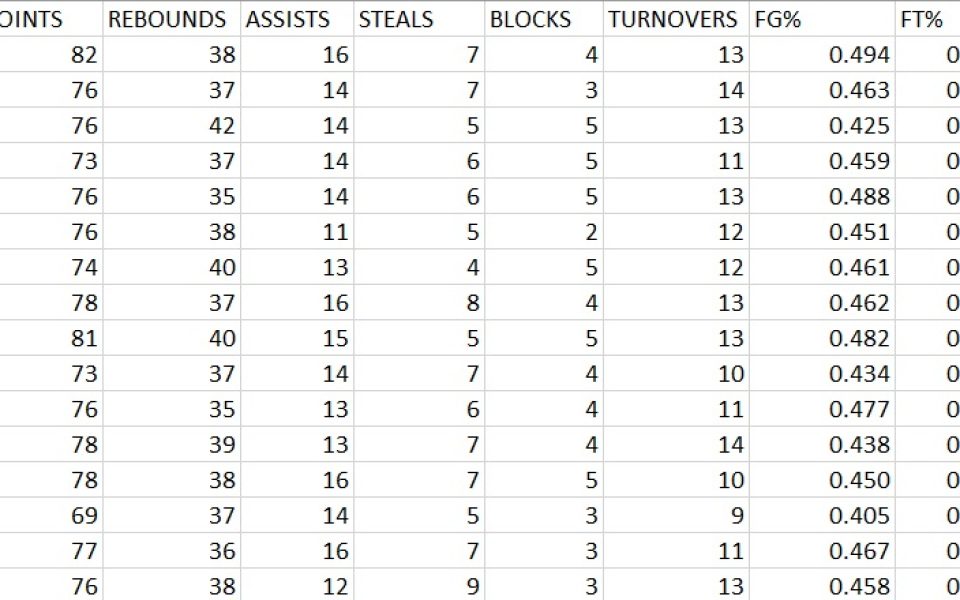 by Anthony Harrison
by Anthony Harrison
I have a system.
I can’t recall exactly when I came up with it — more than six, less than 12 years ago. But I’ve won unofficial bracket challenges with it, and I feel like it fundamentally works.
Everyone who participates in the NCAA Division I Men’s Basketball Tournament bracket-filling bonanza probably has their own approach, but I’ve never met anyone who puts as much science, critical thought and work into their bracket as I do.
Granted, you’re free to tell me all about yours, but this one’s mine.
It never hurts to actually see some games during the regular season. That’s really where you gain knowledge — from watching as many teams play as possible.
But honestly, do you ever watch Iona or Yale University games?
After all the conferences hold their championship games, deciding their automatic bids to the tournament, there’s a lull before the greatest Sunday in secularism: Selection Sunday.

©
For those not in the know, Selection Sunday is when the NCAA gets together and deems a few things: Which seeds the automatic champions receive and which other teams — called at-large bids — get a ticket to the Big Dance.
I love Selection Sunday.
Selection Sunday resembles Christmas Eve in my view, because March Madness is the most wonderful time of the year — everyone getting excited about their placement, all the teams nestled in their seeds, waiting for the games to open.
The tourney is Christmas, and these games are gifts.
Anyway, once that song-and-dance routine wraps up, that’s when my process really begins.
I compose spreadsheets. I typically do them on paper, because I am insane, but I’ve also used Microsoft Excel. On these spreadsheets, I arrange all the significant statistics compiled on all the teams selected for the tournament — no stones unturned.
Then, after drawing out some presumably clear winners, I undergo the tortuous work of comparing teams, stat by stat, and decide who’s going how deep.
Total offense factors in, as does free-throw and three-point shooting — especially regarding underdogs and possible Cinderellas — and rebounding.
But here’s my go-to stat, my secret ingredient to this formula: Offensive rebounds.
I believe offensive rebounds, while a tangible stat, are the best indicator of important intangibles: Hustle. Heart. Persistence. Tenacity.

©
Case in point: You watch the Carolina-Duke game on March 5? Did you catch when Carolina pulled down something like nine offensive rebounds in one possession?
Sure, it also pointed to the fact Carolina couldn’t hit the ocean if they were a team of dolphins on that possession. But it also showed those intangibles.
And guess who won.
Intangibles win games in postseason basketball.
Based on all this mess, I tend to make two brackets — Safety and Wild Card. If I only fill out one for a pool, I try to mix them both.
All there’s left to do is watch the tournament unfold and see who shows up.
Here’s the thing, though: There’s never going to be a perfect bracket. That’s why Warren Buffett’s content with offering a billion dollars to whoever can prove they filled one out perfectly.
You’re gonna take losses, but you’ll want them done in the early rounds. The Elite Eight, the Final Four — that’s where brackets really get made or busted.
I should know.
The first time I ever filled out a bracket, I won a pool.
The year: 2002. College basketball ran thick through my eighth-grader veins. But my team — full disclosure, I’m a Tar Heel — wasn’t doing so hot under head coach Matt Doherty.
While I still loved my Heels, my attention had shifted elsewhere, towards an intriguing University of Maryland Terrapins squad, coached by Gary Williams.
The Terps, at that time perennial NCAA tourney attendees, ranked No. 2 in the preseason and made good on those predictions. Senior talent drove the team — center Lonny Baxter, swingman Byron Mouton and impeccable point guard Juan Dixon.
At this time, I didn’t have an elaborate system. I didn’t even really think about it. But I filled out my bracket anyway, and I had Maryland winning it all against Indiana University.
My late father scoffed. No one in his office pool could believe it.
But I thought the Terrapins could pull it out. I needed a way to make that happen.

©
My thinking went like this: Looking at the seeding, I figured Duke University would be the only team that could beat them — they had once during conference play. So I did some guesswork, and I decided the Hoosiers would knock out the Blue Devils in the Sweet 16.
Sure enough, Indiana shot the lights out — 57 percent from the floor. The Hoosiers won, 74-73.
Long story short: I clinched the Final Four, Maryland met Indiana in the championship and took home their first and only NCAA championship.
I’d been demolished in the early rounds. But I was the only one to pick Maryland.
I won $210.
Therein lies the rub. You can do crazy statistical analysis to your little heart’s content, but what really matters, at the end of the day, is taking chances on your hunches.
After all, it’s gambling on college basketball — all you need’s a little luck.
Join the First Amendment Society, a membership that goes directly to funding TCB‘s newsroom.
We believe that reporting can save the world.
The TCB First Amendment Society recognizes the vital role of a free, unfettered press with a bundling of local experiences designed to build community, and unique engagements with our newsroom that will help you understand, and shape, local journalism’s critical role in uplifting the people in our cities.
All revenue goes directly into the newsroom as reporters’ salaries and freelance commissions.


Leave a Reply